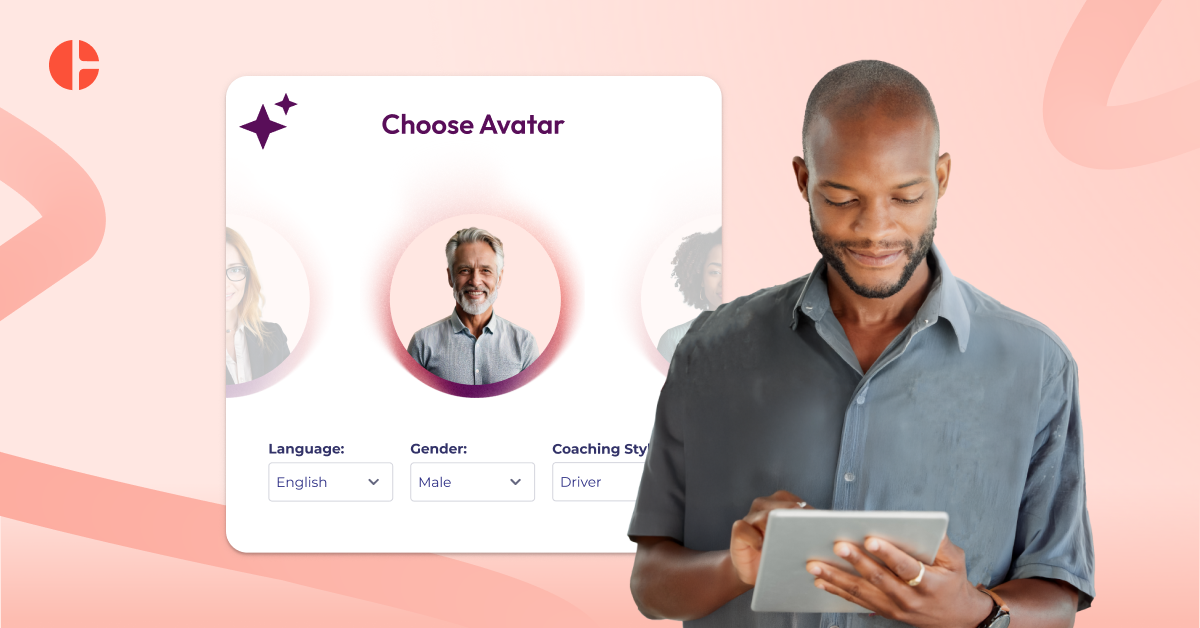Defining Metrics and KPIs to Measure the Effectiveness of Coaching

While top organizations agree that coaching is essential in harnessing employee leadership capabilities and improving financial ROIs. Still, some are uncertain about how to measure its overall effectiveness and to what extent it is responsible for the observed results. Before coaching commences, it’s important to be able to identify the metrics and KPIs that are necessary to measure the impact after its completion. Calculating coaching ROI in terms of its monetary value is one thing, but in terms of behavioral changes and significant organizational changes, knowing what to expect is important.
Understanding Coaching Metrics and KPIs
Understanding coaching KPIs and metrics must be viewed in terms of the organizational goals you hope to achieve by coaching employees. Coaching KPIs are specific outcomes that you hope to see in your employees or their overall workplace performance during and after the coaching timelines. They are specific indicators and measures of change that you expect to see that contribute to the big picture—improved workplace culture, ethics or instilling organizational values.Coaching metrics are important measures used to determine when each KPI is attained. For instance, improved communication can be a great KPI to measure mutual trust in the workplace that’s necessary to reduce organizational turnover. Feedback is one important metric to measure how well communication has improved to foster mutual trust between employees, their colleagues and managers.This can be done by taking count of how frequently employees give feedback during meetings for instance. If your boardroom meeting used to have the same set of people doing the talking in meetings and you opt for coaching to improve communication and confidence, you can always measure how this is changing based on how many more employees feel more confident to express their opinion. If there used to be only 3 out of 10 who did, and the number increased to 7 out of 10 over time, here’s your evidence that your KPI—communication—has improved.To further buttress it, an anonymous survey about how employees feel about sharing thoughts and opinions with their colleagues and supervisors is another metric that you can apply. If the survey results show that more employees feel confident to do this now than before, that’s a metric that helps to understand how well communication as a KPI has improved.
Why coaching metrics and KPIs are essential
As coaches, we understand that you need to help your employees get the best out of themselves and amplify the input they bring on board. However, not all organizations understand the essence of it, as many flow with the fact that coaching employees can fix things, thus they opt for it without necessarily understanding why or what to expect.Continuous employee development is necessary for all-round impact and organizations who invest in it must have access to important metrics that help them to justify why it’s an essential investment. It’s important to understand why coaching is an important part of the organizational budget and why it should continue to be. With proven data obtained within the organization on employee improvement, it becomes easier to commit to employee coaching to continue to see these results.Additionally, it also helps to pique the interest of employees and influence their response to coaching positively. It can be unsettling for some employees when they get recommended for coaching and they feel that their employers consider them inadequate in their roles. While some may take it as an opportunity for self-development, others may feel reluctant to go all the way or to be open with their coaches as a result. Conversely, it may damage the self-esteem of some employees. With the right coaching KPIs and metrics in place, employees can understand the employer’s perspective faster and also have a mental picture of the end goal.This piques their excitement to commit and respond to coaching in a bid to achieve the ultimate result with a renewed sense of confidence. Ultimately making the coaching super effective and KPIs easier to attain.
Important coaching metrics and KPIs to define to measure coaching effectiveness
Organizational needs vary and coaching outcomes should be drawn with this in mind. Determine where you are as an organization, where you want employees to be and the overall impact you want the coaching experience to birth. With this, you can work with a coach to identify the current state, what’s lacking and where you want to be. In evaluating this, you can draw out Key Performance Indicators (KPIs) that help you reflect how close you are to your overall goals. After this, you can then outline the metrics that contribute to the achievement of these KPIs, such that it’s easy to track how things are and what’s changing during the coaching timeline.Here we’ll provide specific KPIs and metrics that can help to measure some common organizational goals. If you have a goal to see employees become more productive and innovative, such that it impacts overall business outputs, the following KPIs are important to look out for.
Improved team performance:
How do you measure the impact of coaching on team performance? This can be done by observing specific metrics that reflect an increase in such. Have you previously experienced low-quality output of work from team members, how often do you have to request that something be reworked after it was submitted? To measure the impact of coaching, you would need to observe how well this has changed over the coaching period. Sometimes, the team could have underlying issues such as a lack of communication or a weak link in the team. When communication improves or the weak link becomes more self-aware and accountable, it would lead to improved team outcomes which is a relevant KPI indicating the impact of coaching.
Promotion:
Promotion is an indicator that an employee has gathered enough skills to take on a higher responsibility. If previously, the organization has had to look out for external hires to fill open top positions, the number of promotions after coaching can be a significant KPI. With coaching, employees can develop skills that make them more responsible and accountable in their jobs, it could also help to instill the required leadership values needed to occupy higher positions. The increase in the number of horizontal and vertical promotions within the organization goes a long way to reflect the impact of coaching on employees.
Innovation:
Organizations need employees to be innovative to stay relevant and continue to meet the ever-changing demands of their target audience. Where employees have previously found it difficult to come up with innovative ideas, it could be a result of underlying organizational issues. Coaching can help to uncover the issues inhibiting employee creativity and help address them across the board. With such an impact, organizations can measure what has changed in the work culture and the quality of actionable ideas received during and post coaching, to determine coaching effectiveness. Of course, if employees now feel more creative and continue to submit innovative ideas and opinions that help to achieve organizational goals, the impact of coaching becomes measurable.
Results from executed ideas:
This seems to be the most important KPI for many organizations. How much result is gotten from the coaching experience remains the bottom line. If more clients are interested in working with your organization due to indications that your customer satisfaction ratings are high, that impact can be traced back to important coaching KPIs such as communication and improved team performance amongst others.
Other metrics to measure coaching effectiveness
Depending on your objective for coaching, these metrics remain relevant to measure coaching effectiveness.
Employ 360° feedback before and after coaching:
Before coaching commences, it remains important to have an overview of what the current situation is. For instance, coaching to improve the work culture can be done by taking feedback on what the current state is like, across the board. During coaching and after, periodic assessments can also be done to determine what’s changing and how well coaching is impacting the overall work culture.
Psychological assessments:
In the case where a selected few are due to undergo coaching, a psychological assessment can help to determine the changes that are expected from coaching. How do others perceive these people, how do they perceive themselves and what are their job satisfaction levels? All of these are major indicators of anticipated changes. Taking these assessments during and after coaching and comparing the results with initial responses can provide specific insights into how well coaching has impacted them.
Performance review:
Using tools like surveys and appraisals to determine individual performance reviews can go a long way. It helps to determine what’s worth improving before coaching commences, and how well these have improved during and after coaching. Also, evaluating if the coaching has helped to achieve or exceed set performance goals can help to determine its overall effectiveness.
Final words
Coaching remains a holistic approach that organizations can employ to develop their employees. Knowing how well coaching is impacting and transforming the workplace can be beneficial for various reasons. That’s why like any business investment, coaching metrics and KPIs must be in place to determine the effectiveness of coaching.
FAQ
Unlike content-first platforms or one-size-fits-all solutions, CoachHub combines global scalability, measurable outcomes, and coaching tailored for regulated, performance-driven environments. We're not just here to train, we partner to transform.
Yes. Coaching builds inclusive leadership, empathy, and adaptability. It equips managers to lead multi-generational teams and align diverse expectations across seniority levels and skill sets.
By focusing on resilience and mindset shifts. Our coaching solutions give managers and teams the tools to stay energized and engaged in high-pressure, regulated environments. This helps them maintain clarity, sustain performance, and adapt confidently through continuous change.




.svg)


.svg)





.png)



